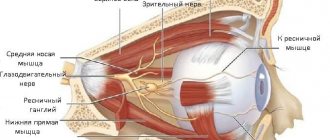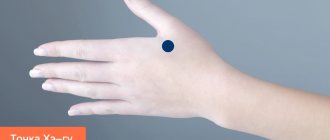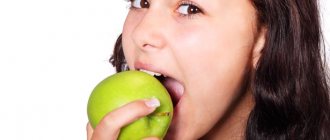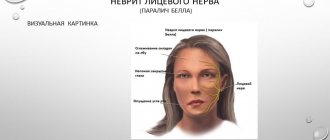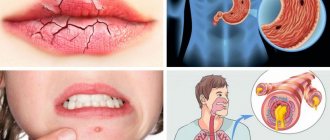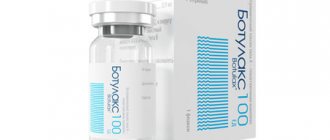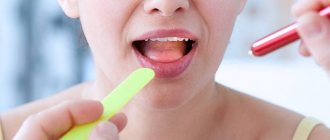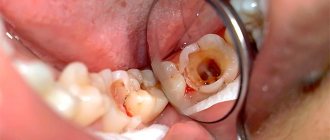Bruxism and hypertonicity of the masticatory muscles are inextricably linked processes. Bruxism is a condition when the muscles of the jaw involuntarily spasm, as a result of which a person begins to grind his teeth. There is an increased tone of the masticatory muscles.
Very often, this problem becomes a serious obstacle to dental procedures, such as implantation, prosthetics, and installation of veneers. Bruxism can interfere with quality orthodontic treatment. Increased tone of the jaw muscles overloads the implants, and dentures are destroyed much faster.
Bruxism also has a negative effect on “native” teeth. The enamel is damaged and worn away, and the teeth become loose. Therefore, if such a problem arises, it is necessary to look for ways to solve it. Thanks to modern medicine, you can get rid of bruxism for a long time.
Symptoms of bruxism and the main causes of hypertonicity:
- the surface of the teeth grinds down, they become flatter;
- the enamel is damaged, fillings fall out, teeth begin to loosen, their integrity is violated, the gums become raw and bleed;
- crunching and clicking appears in the jaw when opening and chewing;
- teeth grinding occurs when a person sleeps;
- it is difficult to open and close your mouth, you feel tired and overstrained masticatory muscles;
- you often unconsciously clench your jaw, most of the time they are tense;
- malocclusions appear;
- the lower part of the face takes on a square shape;
- posture worsens.
Types of trismus and diagnostic methods
There are two main types of spasm of the masticatory muscles:
- Unilateral. Most often it is associated with an inflammatory process or injury to the mandibular joint and adjacent tissues. The result of unilateral pathology is a displacement of the lower jaw to the side when opening the mouth, as well as facial asymmetry.
- Bilateral. The cause of the disease is neuralgia and common infectious diseases. With this type of trismus, the jaws close together with a slight movement of the lower jaw back. There is an inability to open the mouth, difficulty speaking and eating.
To diagnose trismus, the doctor will find out information about previous diseases, operations, injuries, collect anamnesis, and listen to complaints. External examination is supplemented with radiography and other methods of clarifying the diagnosis.
Botulinum therapy as a method of treating bruxism
Botulinum therapy is effectively used to relieve overstrain in the masticatory muscles, fights bruxism and can relieve involuntary teeth grinding at night.
In medicine, as in cosmetology, botulinum toxin type A is used. It is able to immobilize a muscle or relieve tension in it, acting locally. This effect lasts only for a certain period of time. But during this time the body manages to get used to the new state, and the overstrain disappears completely.
Botulinum toxin type A is a neurotoxin produced by the bacteria Clostridium botulinum. It is capable of blocking impulses from the central nervous system sent to the muscles. In fact, botulinum toxin paralyzes them, breaking the connection between muscle fibers and the brain.
The drug is injected into the required areas, so it has an effect exclusively on the desired areas. Dosages of butolotoxin are completely safe, and its effect is reversible. After six months, it is completely eliminated from the patient’s tissues.
Exercises from Jacqueline Kennedy
The standard of elegance and grace, and today is an example for millions of women. Without plastic surgery or nanotechnology, the first lady of the United States retained her luxurious, blooming appearance into old age. And all thanks to the famous lifting complex, which was developed by her personal cosmetologist.
Rejuvenating gymnastics:
First you need to warm up the skin with light patting movements.
It is important to follow massage lines to prevent stretch marks and improve lymphatic drainage. Inhale through your nose, trying to widen your nostrils as much as possible. Exhale smoothly in 3-4 passes through closed lips; you can feel resistance. Repeat the previous exercise, only fix your index fingers at the corners of your mouth. Inhale through the nostrils, exhale smoothly through the right side of the mouth, while puffing out the cheek
Repeat the technique for sagging cheeks on the left side. Take air into your cheeks and roll it like a ball, paying special attention to the areas under the lower and above the upper lip. Close your teeth, open your lips as wide as possible, then relax. Pronounce, clearly pronouncing the vowels - I, A, O, Y. Place your palms on your cheeks, your ring fingers at the inner corners, your index fingers at the outer corners of your eyes. Middle fingers - fix the area under the eyebrow arch. Try to close your eyes, middle fingers hold the upper eyelids, providing resistance. Place your palms on your forehead, open your eyes wide, eyebrows and forehead should remain motionless. Hold for 5–8 seconds. From this position, “shoot” your eyes left and right. Perform the exercise in each direction for 10 seconds. Raise your eyes up and hold for 5 seconds. Sharply look down and also hold for 5 seconds. Use your eyes to describe an imaginary circle, an oval, an inverted “8”, or a rectangle. Alternately change direction, starting from the lower left, upper, lower right, upper corner. Blink quickly with relaxed eyelids for 10 seconds. Finally, turn your neck to the right, feeling tension, change direction. Place your chin on your chest, then tilt your head up.
Unique exercises for face lift.
Main stages of treatment
The first step is preparation for the procedure. It's simple. For a few days, it is necessary to eliminate alcoholic beverages from the diet, and also reduce caffeine consumption. Before the procedure, you should not take antibiotics or blood thinners.
The second step is the introduction of butolotoxin. The procedure lasts about twenty minutes. The required dose is divided into three to four injections. The injection needles are very thin, so the procedure is virtually painless.
The third step is the rehabilitation period. Butolotoxin acts instantly, but gains its full strength after two weeks. After injections, it is not recommended to overheat or cool the treated areas. Sports and facial massage should be excluded.
Why do people resort to Facebook building?
Over the years, changes occur in the skin, it loses its elasticity. As a result, the cheeks sag, a double chin appears, and the oval of the face is deformed.
To make age-related changes less noticeable, you need to regularly train your facial muscles. This smoothes the skin and reduces the number of wrinkles.
The advantage of face building is that facial gymnastics can be done at home and does not require large financial investments.
There are many sets of exercises. Before performing them, be sure to familiarize yourself with the basic rules:
- Before you start doing the exercises, you need to cleanse your face and apply cream to it;
- It is better to perform the exercises while sitting in front of a mirror and do them smoothly and slowly;
- The exercises must be performed regularly for at least 15 minutes;
- The muscles must be tensed as much as possible.
You can highlight cheekbones and emphasize the oval of your face with the help of masks, diets, massage and special exercises.
Implantation for bruxism
Implants can be placed if an integrated approach has been taken to the procedure. In cases where the dental system has not worked correctly for a long period of time, dentists perform treatment using complex implantation.
If excessive tension in the jaw muscles was caused by a reason such as psychosomatics, then the patient is referred for examination to a specialized specialist. Only then can you begin to restore your teeth.
Preventing spasms in the jaw muscles
To prevent the occurrence of such symptoms, you need to treat bad teeth in a timely manner and regularly visit the dentist’s office. If possible, avoid jaw injuries and stressful situations and take care of your mental health.
READ ALSO: how can you straighten your jaw if it is dislocated?
Often, dehydration can provoke a spasm of the masticatory apparatus, so you need to drink more, consuming at least 1.5 liters of fluid per day. By eating right and leading a healthy lifestyle, you can strengthen your muscles and improve your body's immune system.
Prevention of bruxism
Preventive measures for hypertonicity of the masticatory muscles of the jaw imply measures that can prevent bruxism. Treatment of this disease without diagnosis and examination by a qualified specialist can be hazardous to health. As soon as you notice the first signs of this pathology, you need to consult a doctor as soon as possible. He will prescribe diagnostics that will help identify a possible problem and effectively eliminate it.
The patient may need to be examined by specialists such as a neurologist or psychotherapist. Increased tone of the masticatory muscles has different etiologies. Doctors in these areas can prescribe various treatments, such as physical therapy, magnesium-based medications. All this is decided on an individual basis.
Preventative measures may help if approved by the patient's physician. You can easily massage the cramped areas. There is a set of exercises that can reduce the manifestations of bruxism. They must be done daily before going to bed.
Stressful situations must be avoided. You should rest more, get enough sleep, and spend a lot of time outdoors. Avoid caffeine and take baths with herbs that have a sedative effect. These measures will be an excellent prevention of muscle spasms, and will also enhance the effect of complex treatment.
Contact the Denta-Labor dental laboratory for solutions to issues regarding the protection of your teeth during bruxism.
Getting rid of a nightmare
Brux checher
We should immediately warn you: bruxism today, despite all the progressive achievements of modern dentistry, remains an open and not fully studied topic. And also a serious problem in terms of diagnosis and treatment. But this does not mean that treatment can be postponed.
For effective treatment of bruxism, it is necessary to pay attention to two aspects: dental (mandatory visit to the dentist) and psychological (constant work by the patient on himself).
Visit to the dentist
Diagnosis and treatment of bruxism begins with a visit to the dentist. After a thorough examination of the oral cavity, the doctor determines signs of grinding and, if necessary, treats damaged teeth. For an objective diagnosis of the disease, a specialist uses a brux checker - a special mouthguard. The item is selected separately for each patient, and then inserted overnight.
Brooks checker (Brux checher) was developed by Professor Sadao Sato from Kanagawa Dental College (Japan). It helps the dentist both at the diagnostic stage and at the treatment stage of bruxism. Brooks checker allows you to identify occlusal obstacles and select the appropriate treatment method. To make a brux checker, only an impression of the upper and lower jaw is required and then a special mouthguard is made.
Based on the prints on the bruxchecker, the dentist analyzes the nature of the violations and identifies deficiencies. If necessary, the patient can be referred for consultation to a periodontist or orthodontist to replace crowns and correct the bite.
For mild cases of bruxism, dentists recommend protective orthodontic mouth guards . Special jaw pads form a barrier between the teeth to prevent them from touching.
Drug treatment of chewing movements consists of taking calcium-containing drugs and magnesium .
How to prepare your face for charging
Preparation for a massage or exercise consists of three stages, which must be followed strictly:
- thoroughly clean your face and hands;
- treat the skin with a tonic lotion;
- Apply a few drops of special oil for better gliding of your fingers and prevent skin stretching.
To control the correct execution of the exercises, be sure to use a mirror: you need to know and understand where to press. The position should be comfortable, fingers should be relaxed.
What cosmetics are useful? Choose any usual means. For example, these.
Cleansing gel for face “Endless freshness. Rose + Lotus”, L'Oréal Paris
The formula with rose and lotus extracts gently cleanses and refreshes the skin. Suitable for normal and combination skin.
Refreshing facial toner with grape extract “Basic Care”, Garnier
Enriched with grape extract, this vitamin tonic is also intended for normal and combination skin.
Transformative Extraordinary Facial Oil "Luxury Nourishment", L'Oréal Paris
Eight different oils in the composition nourish the skin of the face and will certainly give you a pleasant feeling when performing a massage.
Brow lift
Whether you are surprised by the results of these exercises or not, you are encouraged to raise your eyebrows and even use your hands to do so, because with the help of the following exercise you can strengthen the muscles around the eyes and thereby get rid of droopy eyelids without any expensive surgery - all independently and with your own hands!
How to perform this miracle exercise? Sit up straight (be sure to have a straight back) and look forward. Place your right finger on your right eyebrow in the first third closest to your ear and do the same with your left hand on your left eyebrow. Now gently press, raise your eyebrows up as high as possible and at the same time turn your eyes and look down. Hold this position for three to five seconds, then remove your hands and relax your facial muscles. Repeat 10 times.
For greater results, do these facial muscle strengthening exercises daily.
Facebuilding for cheekbones and cheeks
Why do many women resort to face-building for their cheekbones and cheeks? Of course, it is not possible to change the shape of your face without surgery, but it is quite possible to get rid of excess plumpness and slightly change its outline with the help of special exercises.
5 best exercises to pump up your cheekbones
If you want to have cheekbones with pronounced contours, you can do this with the help of simple exercises:
- Puff out your cheeks as much as possible, keeping tension in your cheekbones. Fix your face in this position for one minute
- Pull your cheeks in as much as possible and hold the tension in your cheekbones for 30 seconds.
- Clench your teeth and try to smile widely. Stay in this position for one minute
- Open your mouth as wide as possible and make the letter O with your lips. Move the tip of your tongue clockwise in a circle for half a minute and counterclockwise for the same amount of time.
- Open your mouth wide. Lower your lower jaw down and stay in this position for a minute.
The workout will only take 5 minutes, but during this time the muscles will become toned, wrinkles will smooth out, and cheekbones will become more pronounced. Exercises can be done at any time when it is convenient for you - morning, afternoon or evening. For greater effectiveness, they can be repeated several times at once, but no more than five times.
Diagnostics
Early cases of hemifacial spasm are sometimes difficult to distinguish from facial myokymia, tics or myoclonus, which may be caused by pathological processes in the cerebral cortex or brainstem. In such cases, neurophysiological testing is the most valuable diagnostic method.
Wide and variable synkinesis on eyeblink tests and high-frequency discharges on electromyography (EMG) with associated clinical manifestations are diagnostic criteria for hemifacial spasm. Stimulation of one branch of the facial nerve can spread and cause a response in the muscle innervated by another branch. Synkinesia is absent in essential blepharospasm, dystonia or epilepsy. Needle myography shows irregular, short, high-frequency burst potentials (150-400 Hz) of motor units that correlate with clinically observed facial movements.
Visualization methods
Magnetic resonance imaging is the diagnostic method of choice when there is a need to exclude compression effects. Angiography of the cerebral vessels is generally of little value in the diagnosis of hemifacial spasm. Ecstatic blood vessels are rarely identified, and these vessel findings may be difficult to correlate with nerve effects. Performing angiography and/or magnetic resonance angiography is typically used to perform surgical vascular decompression.
Degrees of trismus
Trismus has three degrees or forms:
- at the first stage - the mildest degree of trismus, when the mouth opens 3-4 cm;
- at the second stage - moderate severity, the mouth can only be opened slightly, about 1-2 cm;
- at the third stage - a severe form, the jaw does not open at all or for a small distance.
The consequences of long-term tension and strong pressure in the umbilical nervous system can be damage to the enamel or dentin, chips, and loss of dental units.
Types of massage of masticatory muscles
A variety of manual techniques used to restore the natural anatomical state of the muscles and ligaments of the TMJ involve performing exercises both with the help of a practitioner and independently. In this case, it is important to strictly follow the manipulation technique, since otherwise there is a possibility of aggravating an already complicated condition. Outpatient massage to relax the masticatory muscles includes the following procedures:
- Joint traction – used for diagnosed dysfunction, and is implemented by applying physical stress to the mandibular molars. The duration of pressure applied by the direct method, that is, directly from the oral cavity, varies between 10-30 seconds. The action is repeated several times, due to which the joint capsule stretches and the cavity inside it increases.
- Normalization of the articular disc. The compression effect is ensured by a special gripping technique, which involves repeated sequential abduction of the mandibular region into its natural position until the head disc is stabilized.
- Massage aimed at relieving pain due to TMJ dysfunction. The doctor has a targeted effect on certain areas located in the projection of the upper masticatory units, the lateral and pterygoid muscles, and repeats the procedure until the syndrome that occurs under pressure is completely relieved.
Also, in order to alleviate the pathological condition, relieve tension and prevent TMJ pathologies, extraoral massage is practiced, performed with the jaw region closed. Pressure is applied to the middle and angular areas of the masticatory muscles, where trigger points are located.
Advantages
An abnormal condition of the jaw region, characterized by severe symptoms that negatively affect the patient’s well-being, is a reason to seek medical help. Practice confirms that massaging the masticatory muscles allows you to get rid of painful sensations in a short period of time, and also prevents the development of more serious negative consequences. In addition, as part of consultation and manual therapy, patients acquire practical skills that allow them to independently carry out preventive exercises and therapy. These skills are useful both as part of general health maintenance and during exacerbations or relapses of pathologies that impair the functionality of the temporomandibular joint.
About Us
The specialists of the MY ORT dental clinic provide not only orthodontic and orthopedic treatment services aimed at restoring the integrity and aesthetics of the dentition. The arsenal of techniques used by qualified doctors also includes TMJ massage, which relieves excess stress on the masticatory muscles. The availability of advanced equipment, materials and technologies guarantees achievement of the desired result in the shortest possible time. Leave a request by phone - we will take care of your health!
